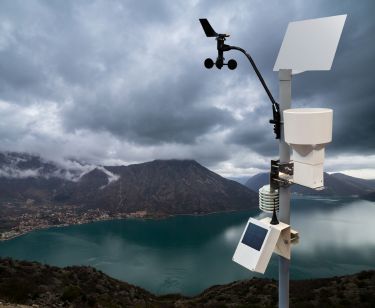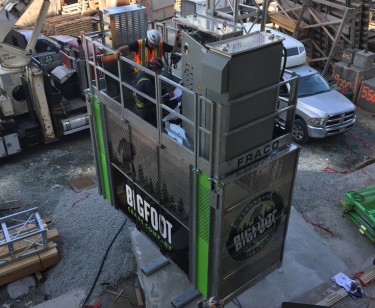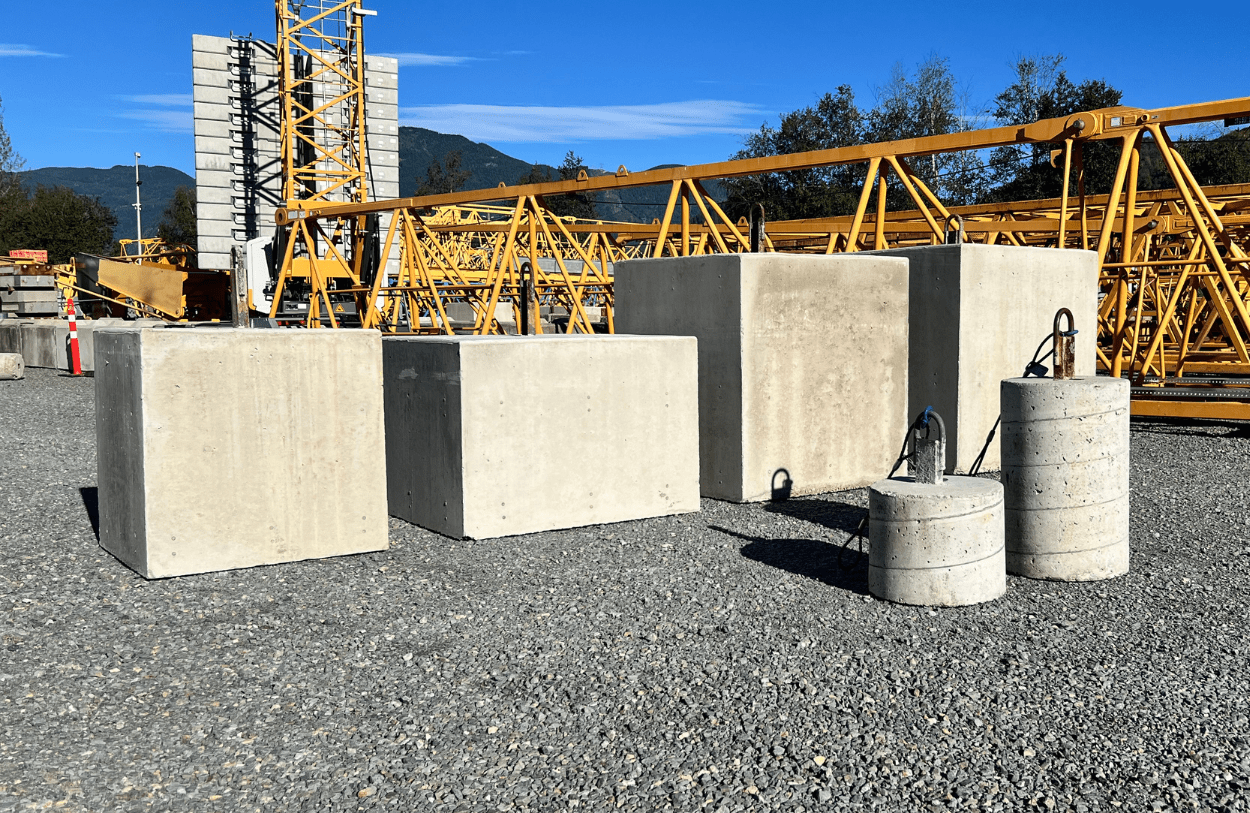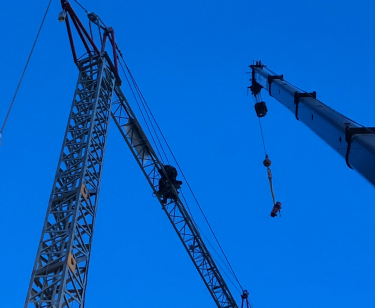Many people think of anemometers as tools used only in weather stations or research labs, but these small instruments play a quiet role in daily life. Behind the scenes, they support activities that range from flying drones and hosting outdoor events to managing home ventilation systems. Knowing how wind behaves can help improve safety, comfort, and performance in places most wouldn’t expect. While the science behind anemometers is precise, their real-world benefits are simple and practical.
The Everyday Value of Measuring Wind
Wind impacts many parts of daily life, often in ways people do not realize. It influences safety, performance, and efficiency across a variety of activities. Understanding why we need to measure wind and its conditions helps manage risks and improve outcomes.
Bringing Visibility to an Invisible Force
Anemometers provide important information about wind speed and direction that would otherwise go unnoticed. This data helps people make smarter decisions in different situations, enhancing safety and effectiveness.
Real-World Examples
Outdoor activities benefit greatly from wind measurements. Kite flyers and gardeners check wind conditions to avoid accidents or ensure treatments stay on target. Cyclists, runners, boaters, and drone pilots rely on wind data to improve safety and performance during their activities.
Wind’s Role at Home and Work
Measuring wind also helps improve comfort and energy efficiency. Ventilation systems can adjust airflow based on wind patterns, while buildings and outdoor structures are designed to handle local wind conditions better.
Anemometers make an invisible force easier to understand and manage. This simple tool helps people stay safe, work efficiently, and enjoy daily routines with fewer unexpected challenges. It shows how wind affects many parts of life beyond just the weather forecast.
Anemometers: Everyday Use Cases
Anemometers find use in many everyday settings that touch on safety, efficiency, and enjoyment. Each use case highlights how important it is to understand and monitor wind. Accurate readings guide critical decisions across industries and recreational activities. This knowledge empowers people to work smarter, protect resources, and enjoy outdoor life with greater confidence. Recognizing the many roles of anemometers helps appreciate how this simple instrument affects daily routines in ways that often go unnoticed.
Construction Sites and Cranes
Operating cranes safely requires constant awareness of wind conditions. Wind speed limits guide when lifting operations must pause to prevent accidents. Sensors mounted on cranes offer real-time wind readings that workers can trust to make quick decisions. These anemometers often come integrated into crane control systems, triggering automatic alerts if winds reach dangerous levels. This integration reduces risk and helps keep construction workers safe. The ability to monitor wind accurately allows teams to plan lifts efficiently, avoiding delays or hazards caused by sudden gusts.
Farming and Agriculture
Farmers rely on detailed wind data for tasks that affect crop health and productivity. Precision spraying demands attention to wind speed and direction to limit chemical drift, protecting surrounding areas and improving effectiveness. Anemometers provide this data, allowing operators to adjust spraying schedules or techniques. Wind measurements also play a role in frost monitoring; cold air movement influences frost risk, so tracking wind flow helps farmers protect vulnerable plants. Planning irrigation benefits from wind information as well, since wind affects evaporation rates and water distribution. Accurate wind data allows agricultural practices to become more efficient and environmentally conscious.
HVAC and Ventilation Testing
Indoor air quality depends heavily on airflow control, making anemometers valuable for inspectors and contractors. These instruments help measure airflow inside ducts and vents, ensuring systems deliver proper ventilation. Checking air exchange rates keeps buildings comfortable and healthy for occupants. Using anemometers, professionals can detect blockages or leaks in ventilation systems that might go unnoticed. Routine testing supports maintenance schedules and helps identify when repairs or upgrades are necessary. Reliable wind data inside buildings guarantees that HVAC systems work as intended and maintain good air circulation.
Drone Operations and Aerial Photography
Operating drones safely requires precise knowledge of local wind conditions. Pre-flight checks often include wind speed measurements to prevent drifting, which could lead to crashes or loss of control. Both hobbyists and commercial operators rely on anemometers to determine if conditions are suitable for flying. Wind data influences flight path planning, battery use, and camera stability, ensuring better results in aerial photography or surveying. Understanding wind patterns also helps extend drone lifespan by avoiding harsh conditions that strain equipment.
Recreational Activities
Outdoor sports and hobbies benefit greatly from real-time wind measurements. Sailing, paragliding, and windsurfing enthusiasts depend on accurate wind speed checks to optimize performance and stay safe. Hunters consider wind direction and speed to manage scent control and predict bullet trajectory, increasing chances of a successful hunt. Golf course managers use wind mapping to plan turf treatment and irrigation, helping keep greens healthy despite changing weather. These varied activities show how wind data supports fun and precision in everyday leisure.
Theme Parks and Outdoor Events
Managing wind is crucial for theme parks and outdoor gatherings. Operators monitor wind thresholds to decide when to pause rides, preventing accidents caused by high winds. Safety extends to large tents and stages set up for concerts or fairs, where strong gusts pose risks to structures and attendees. Anemometers help event planners establish safety protocols based on current wind data, protecting guests and performers alike. Accurate wind measurement supports smooth operations and keeps outdoor entertainment enjoyable without unexpected interruptions.

Everyday Professionals Who Rely on Anemometers
Different professionals use anemometers for safety, efficiency, and planning across diverse industries. Their reliance on precise wind data highlights the instrument’s wide-reaching impact.
Crane Operators
Crane operators monitor wind speed closely to ensure safety during lifts. Sudden gusts or sustained high winds can create hazards, potentially causing accidents or equipment damage. Anemometers mounted on cranes provide live wind data, allowing operators to pause work when conditions become unsafe. This information helps maintain smooth operations while protecting workers and machinery.
Golf Course Managers
Golf course managers depend on accurate wind data to maintain healthy turf and plan irrigation schedules effectively. Knowing wind speed and direction helps them adjust watering and fertilizer applications, minimizing waste and protecting delicate grass areas. Wind information also assists in timing treatments to avoid drift onto nearby properties, keeping the course in top shape while respecting the environment.
HVAC Technicians
HVAC technicians use anemometers during inspections and repairs to measure airflow through ducts and vents. Proper ventilation ensures comfortable indoor air quality and energy efficiency. Accurate wind readings help these professionals detect blockages or leaks and confirm that systems perform as designed. This information supports routine maintenance and helps prevent costly breakdowns.
Wedding and Event Planners
Wedding and event planners must consider wind conditions for outdoor setups. Tent safety depends on monitoring wind speeds to prevent accidents caused by strong gusts. Anemometers provide real-time data so planners can decide when to reinforce structures or delay activities. These measurements protect guests and equipment while keeping events running smoothly.
Fire Departments
Fire departments use wind data to predict wildfire spread patterns. Wind direction and speed heavily influence fire behavior, affecting evacuation routes and firefighting strategies. Anemometers placed near fire zones give crucial information that helps teams act quickly and keep communities safe.
Ski Resorts
Ski resorts rely on wind measurements to set safe operating limits for chairlifts. High winds can cause dangerous swaying, forcing lifts to pause or close. Monitoring wind ensures that skiers remain secure and that operations continue safely during changing weather.
How Portable Anemometers Make This Possible
Compact anemometers have become increasingly popular due to their convenience and ease of use. These devices allow professionals and hobbyists alike to measure wind speed and direction on the spot, without needing bulky or fixed equipment. Their small size fits easily in a pocket or tool kit, making them ready for quick checks anytime.
Modern portable anemometers often connect to smartphones or tablets through Bluetooth. This feature enables real-time syncing of wind data to mobile apps, where users can view, record, and analyze measurements. Mobile apps sometimes include alerts and history tracking, adding layers of convenience and precision. This technology helps users make informed decisions quickly, whether on a construction site or during outdoor activities.
Affordability has also improved, opening access to a wider range of users beyond industrial or scientific fields. Farmers, event planners, outdoor enthusiasts, and HVAC technicians can now rely on portable anemometers without significant investment. This shift brings the advantages of accurate wind measurement to everyday situations, enhancing safety, efficiency, and performance in many areas. The accessibility of portable anemometers continues to support diverse professions and hobbies, making wind data more practical and useful than ever before.
Why It Still Comes Down to Purpose
Every use of an anemometer, no matter how small, is driven by a clear purpose. Safety often guides the need for precise wind data, helping people avoid risks in everyday situations. Alongside safety, precision becomes important when detailed information influences critical outcomes, such as in farming or construction. Understanding wind conditions allows for better planning, which in turn improves overall performance. Turning the invisible force of wind into clear data makes decision-making easier and more reliable. This connection between purpose and measurement highlights why accurate wind tracking remains valuable across many fields.
Conclusion
Bigfoot Crane Company supplies dependable anemometers that help crews stay alert and safe when wind conditions shift. We’ll help you choose a system that fits your site and keeps your team informed in real time. Our anemometers provide the clarity and accuracy professionals need to make informed decisions in fast-paced, high-stakes settings. Reach out to us today and discover the best anemometers to bring confidence and control to every environment you work in.





